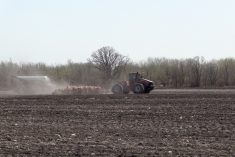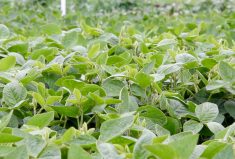CNS Canada –– Excessive rain and high humidity over the past few weeks are causing major problems for haying operations in Saskatchewan and Manitoba.
“We should be well underway in our progress and I think we are far behind right now,” said Leanna Rousell, executive director of the Saskatchewan Forage Council.
The majority of Saskatchewan has had a lot of wet weather this week, especially the lower half of the province, she said.
Heavy rainfall caused flash flooding in some areas, forcing communities to delcares states of emergency, including Estevan, in Saskatchewan’s southeast, and Arborfield and Carrot River in the province’s northeast.
Read Also

India slaps 30 per cent import duty on yellow peas
India has imposed a 30 per cent duty on yellow pea imports with a bill of lading date on or after Nov. 1, 2025.
This has caused headaches for producers who’ve tried to start haying and for those trying to wait out the storm.
“I’ve heard of some crops that have been down for quite some time and have got rained on; the quality is just not there anymore,” Rousell said.
A lot of producers also haven’t started haying yet, Rousell said. With alfalfa past full bloom right now, quality will have dropped.
Haying operations haven’t been much better in Manitoba, where producers are baling fields at higher moistures than recommended or ensiling due to the frequent rains, according to the province’s most recent crop report.
With the feed value decreasing as time goes on, Rousell said she’s unsure how prices will be affected.
“Hopefully the weather will get all the rain out of its system and we’ll be able to start haying in the relatively near future,” she said. “If it doesn’t, everyone will probably take their hay crop off as soon as possible, but the overall quality will definitely be down.”
Very little hay trading has been done so far this year because the vast majority of hay has not been cut yet, Rousell said, but early prices are ranging from 3.6 to five cents per pound.
— Erin DeBooy writes for Commodity News Service Canada, a Winnipeg company specializing in grain and commodity market reporting.












